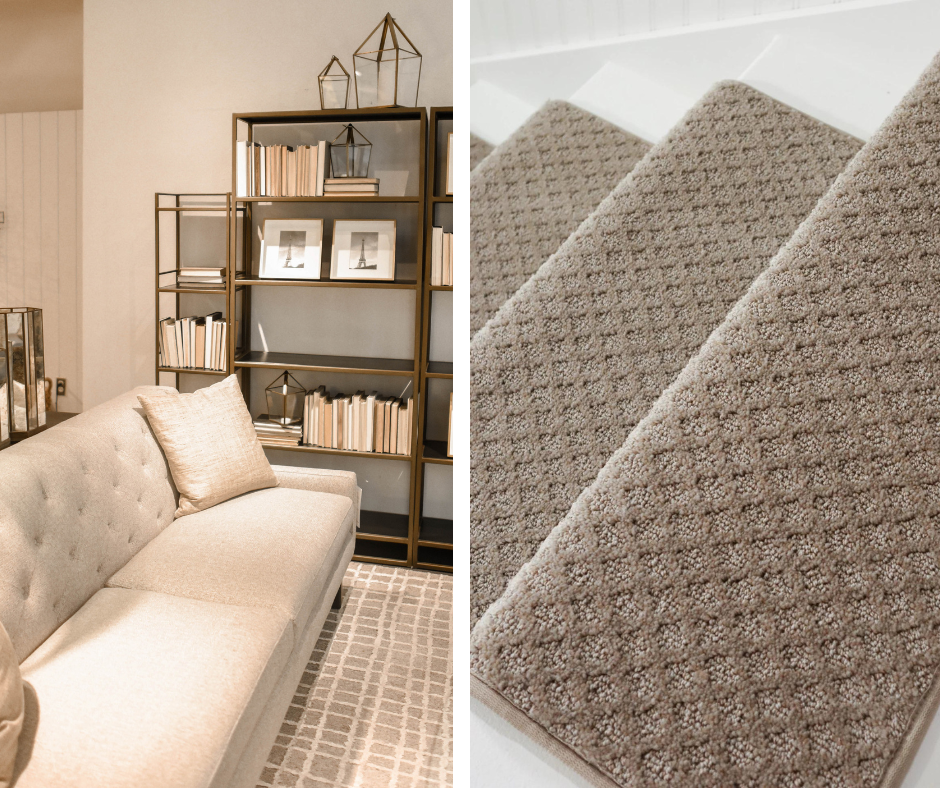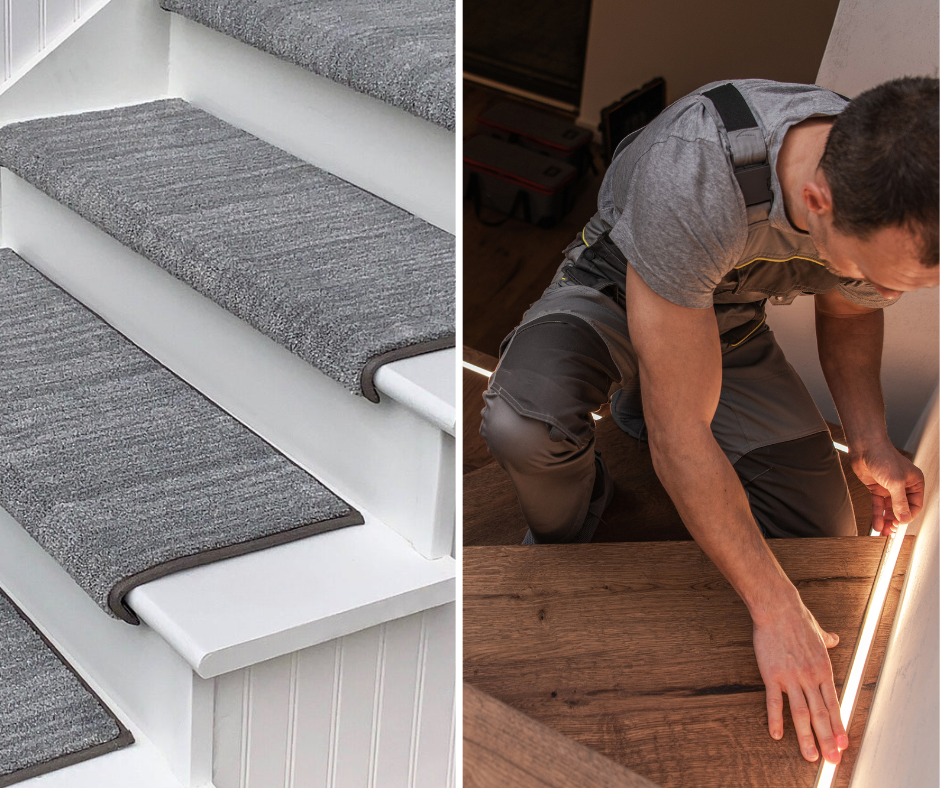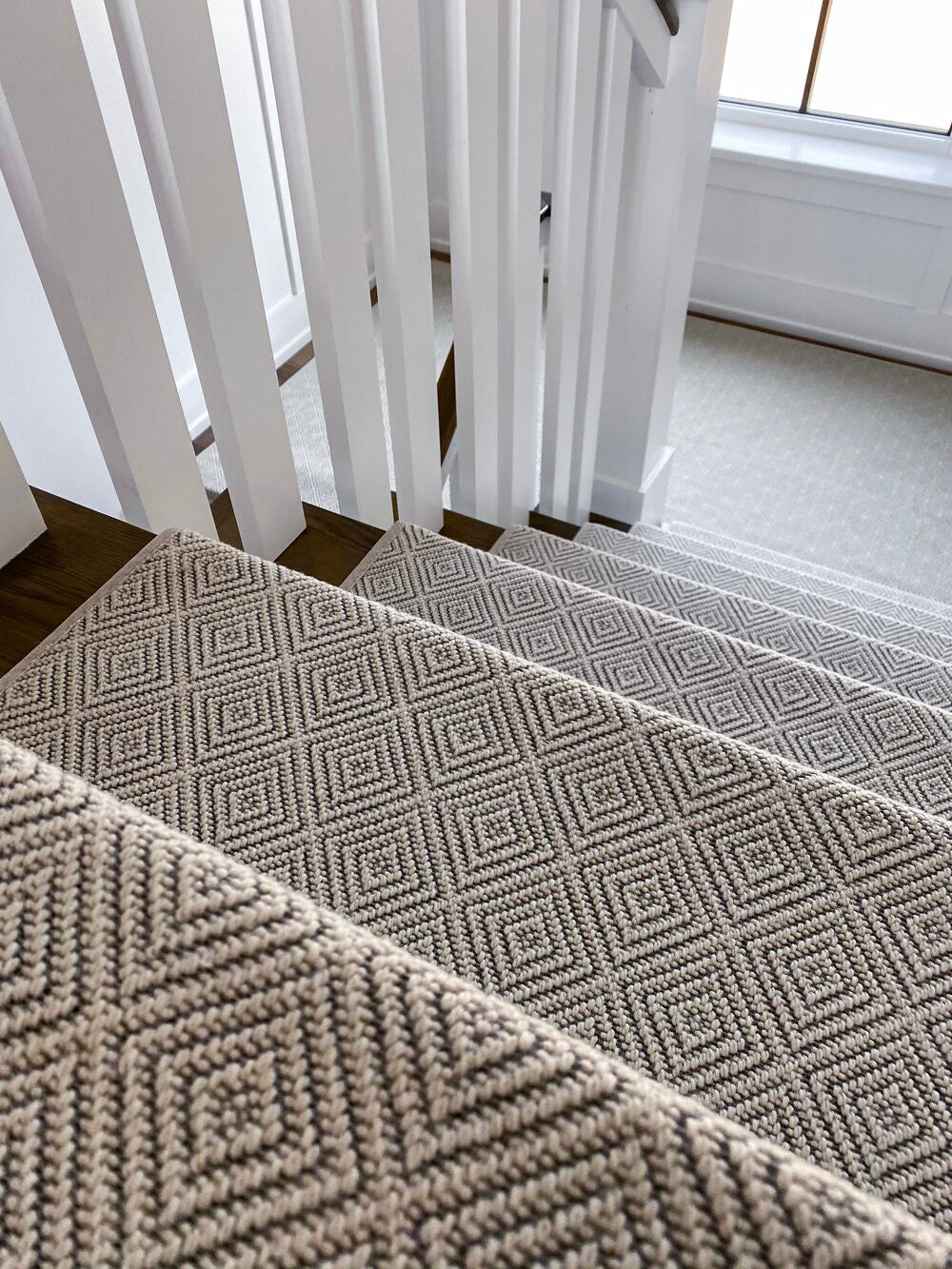Installing carpet on stairs raises an important question: do you put carpet padding on stair risers?
The short answer is no—padding is typically used on treads for comfort and durability, but it’s unnecessary on risers since they don’t endure foot traffic.
Most homeowners prefer a clean, seamless look, using only carpet stair treads for safety and style.
However, some may add padding to risers for slight noise reduction, though the visual effect can appear bulky.
This guide explores the benefits of carpet padding, alternative solutions, and the best materials for stair safety.
By the end, you’ll know exactly how to achieve a professional, functional stair installation.
Understanding Carpet Padding on Stairs
Carpet padding serves several important purposes when applied to stair treads:
-
Comfort – Softens each step, providing a cushioned feel underfoot.
-
Durability – Helps absorb impact, reducing wear and tear on the carpet.
-
Safety – Adds grip, reducing the chances of slipping.
-
Noise Reduction – Dampens sound, making foot traffic quieter.
However, stair risers do not experience the same foot traffic as treads, which is why padding is typically unnecessary in these areas.
The Aesthetic Appeal of Padding-Free Stair Risers
Most homeowners prefer a clean, tailored appearance where the stair carpet lies flat against the risers without additional padding.
Adding padding to risers can cause a bulging effect, which may lead to an uneven or unprofessional look.
If you desire a smooth, seamless design, installing carpet directly onto the risers without extra padding is the best approach.
Pros and Cons of Carpet Padding on Stair Risers
Carpet padding on stair risers can reduce noise and add a softer aesthetic, but it may create an uneven look and complicate installation.
Understanding the advantages and drawbacks helps homeowners make informed decisions about whether padding is necessary for their stairs.
Advantages of Adding Carpet Padding to Stair Risers
-
Noise Reduction – Padding on the risers can further dampen sound, reducing echoes in multi-story homes.
-
Aesthetic Softness – Some homeowners feel that padded risers create a softer, cozier visual appeal.
-
Extra Cushioning for Pet Safety – In some cases, pets may benefit from softer risers, though this is not a necessity.
Disadvantages of Adding Carpet Padding to Stair Risers
-
Uneven Appearance – Padding on risers can create bulging, leading to an unpolished finish.
-
No Functional Benefit – Since risers are vertical and not walked on, the padding does not contribute to durability or comfort.
-
More Complicated Installation – Adding padding to risers requires extra materials and effort, potentially increasing installation time and cost.
Should You Use Rubber Stair Pads?
If safety is a primary concern, rubber stair pads offer an excellent alternative to traditional carpet padding.
Unlike standard carpet padding, rubber stair pads provide added grip without altering the appearance of the risers.
Benefits of Rubber Stair Pads
-
Enhanced Traction – Prevents slipping, making stairs safer for children, pets, and elderly individuals.
-
Minimalist Design – Ideal for modern or contemporary home aesthetics.
-
Durability – Resistant to moisture and wear, lasting longer than traditional padding.
Rubber stair pads are typically installed on treads rather than risers.
However, for homeowners who prefer a unique design, they can also be used on risers to create a sleek, modern look.
How to Install Carpet Padding on Stairs
If you decide to install carpet padding, focusing on the treads ensures maximum comfort and functionality.
Here’s how to do it:
1. Measure and Cut the Padding
Use a utility knife to cut the padding to the exact size of each tread.
High-density foam or rubber stair pads are ideal for durability and comfort.
2. Secure the Padding
Attach the padding using tack strips along the back edge of each tread.
Staples can also be used to hold the padding in place securely.
3. Choose the Right Carpet Installation Method
Two main techniques exist for installing carpet over padding:
-
Waterfall Method – The carpet drapes over the tread and down the riser in a continuous flow.
-
Hollywood Method – The carpet wraps tightly around the tread and is stapled at the back, creating a tailored, secure fit.
For a polished look, most professionals recommend the Hollywood method, as it eliminates visible gaps and ensures a snug finish.
Best Carpet Padding for Stairs
Choosing the right type of padding is crucial for the longevity and functionality of your staircase.
Types of Carpet Padding for Stairs
-
High-Density Foam Padding – Provides comfort while resisting compression under heavy foot traffic.
-
Rubber Carpet Padding – Offers superior grip, moisture resistance, and longevity.
-
Felt Padding – A traditional choice that provides a softer feel but may not last as long as rubber or foam.
For homeowners looking for a combination of comfort and safety, rubber stair pads remain a top choice due to their superior durability and non-slip properties.
Why Most Experts Avoid Padding on Stair Risers
Professional carpet installers typically do not recommend adding padding to risers for several reasons:
-
Aesthetics – Padding on risers can create an uneven look that detracts from the overall design.
-
Installation Complexity – Extra padding requires additional materials and time, increasing labor costs.
-
Minimal Noise Reduction – While padding can slightly reduce sound, the difference is often negligible compared to using high-quality carpet.
Instead of adding padding to risers, homeowners can achieve noise reduction by selecting thicker carpet for the treads or opting for rubber stair pads, which provide additional grip and safety.
Alternatives to Carpet Padding for Stair Risers
If you want to enhance the look or functionality of your stair risers without using padding, consider the following options:
1. Decorative Stair Risers
Instead of adding padding, you can install decorative elements such as:
-
Painted risers in bold or neutral tones.
-
Wood or tile paneling for a modern or classic aesthetic.
-
Custom vinyl decals for a unique, personalized look.
2. Carpet Runners
A well-fitted carpet runner covers only the treads, leaving the risers exposed for a clean and elegant appearance.
Runners also provide comfort and grip without requiring additional padding.
3. Soundproofing Solutions
If noise reduction is a priority, installing rubber stair pads or using thicker carpet padding on the treads can help absorb sound more effectively than adding padding to the risers.
Steps To Success
When planning a stair project, it's important to consider both aesthetics and functionality.
Carpet padding is essential for stair treads but is usually unnecessary for stair risers.
For most homeowners, leaving risers unpadded provides a sleek, professional look while maintaining easy installation.
If noise reduction is a concern, alternatives like rubber stair pads or thicker carpet on treads can help achieve a quieter staircase.
Ultimately, the best choice depends on your home’s style, safety needs, and personal preferences.
By selecting the right materials and installation techniques, you can create a staircase that is both stylish and functional.
Explore High-Quality Stair Treads from Oak Valley Designs
For premium carpet stair treads that combine luxury, safety, and durability, explore Oak Valley Designs' handcrafted solutions.
Contact Us:
-
Website: https://oakvalleydesigns.com/
-
Phone: 706.331.0315
-
Email: info@oakvalleydesigns.com
-
Address: 30 River Ct SW Bldg E Cartersville, Ga 30120




